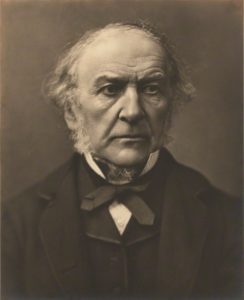1853: Sewell Pushed Into Public Life
February 19, 2022
By AHNZ
 Today in Canterbury history, 19 February, 1853, in Christchurch, Edward Gibbon Wakefield published a letter in the Lyttleton Times projecting Henry Sewell into public life. Sewell, who had not been consulted about this, was furious!
Today in Canterbury history, 19 February, 1853, in Christchurch, Edward Gibbon Wakefield published a letter in the Lyttleton Times projecting Henry Sewell into public life. Sewell, who had not been consulted about this, was furious!
Both men have been in the Colony for 2 weeks, both Canterbury Association Big Wigs from England behind the settlement of Canterbury who sailed from England together. Wakefield in particular is the architect of colonisation so the settlers look to him to answer all the many complaints and concerns about Canterbury Association progress.
“…impressions with regard to the policy and conduct of the Canterbury Association in their relations with the Settlement. It is not my business to explain the truth on this subject; but knowing it exactly, and how contrary it is to common belief and suspicion in the settlement, I wish to say deliberately and publicly, that there is a truth to be told, which, if the colonists can extract it from Mr. Sewell, must at once correct the false impressions to which I have alluded. This statement also is made by me entirely without Mr. Sewell’s consent or knowledge.” – Wakefield, Lyttleton Times (19 February, 1853); Papers Past
Some of Wakefield’s associates referred to him as The Great Spider because of his nature. EGW did weave webs of manipulation over people and tweek the strings and tug the threads to mastermind grand schemes. On this occasion Wakefield bluntly dumped his colleague in the deep end! Previously the men seemed to get on but never would again. Wakefield had a habit of pissing off his fellows and courting popular support.
In time, Henry will go on to be recognised as New Zealand’s first Prime Minister or ‘Premier’ as we called it then. At the time, fresh off the boat, he wanted to have a quiet administrative life in Canterbury. It was not expected that John Godley would exit the scene so soon and leave such a large vacuum in Canterbury colonial politics.
Gladstone
 One of the hard questions the Canterbury Pilgrims put to Sewell was the situation with the proposed Gladstone Scheme. Gladstone was to be in North Canterbury, beyond the Waimakariri. As exclusive and fabulously Anglican as the Pilgrims were, Gladstone was to be for an even more exclusive set. It was for the Pilgrim’s pilgrims. Settlers had been sold their New Zealand adventure on this idea and had paid for their land yet the Association had done nothing to develop the scheme. Neither would Godley lift a finger despite visitors to the prospective area being impressed and eager to develop the area’s potential. Our ancestors felt as if they had been stalled and deceived. Wakefield had given them someone to be angry at, Sewell.
One of the hard questions the Canterbury Pilgrims put to Sewell was the situation with the proposed Gladstone Scheme. Gladstone was to be in North Canterbury, beyond the Waimakariri. As exclusive and fabulously Anglican as the Pilgrims were, Gladstone was to be for an even more exclusive set. It was for the Pilgrim’s pilgrims. Settlers had been sold their New Zealand adventure on this idea and had paid for their land yet the Association had done nothing to develop the scheme. Neither would Godley lift a finger despite visitors to the prospective area being impressed and eager to develop the area’s potential. Our ancestors felt as if they had been stalled and deceived. Wakefield had given them someone to be angry at, Sewell.
After being bailed up and abused one day at the Heathcoate Ferry House it was decided by Sewell and his second in command, Captain Charles Simeon, both decided they didn’t need the stress and drama of it. The hidden truth was that the Canterbury Association was on its last legs and had no capital to offer for an offshoot settlement. The Association men cut Gladstone loose. The hopefuls, such as Rev. John Raven and Francis Fuller, set out under their own steam instead. But they didn’t call it Gladstone (after the British Government Minister and future Prime Minister, image right) now. They founded what was called Kaiapoi as it is to this day.
Wakefield, like Sewell, would also go to the capital city of Auckland for national politics and end up annoying the hell out of everyone there. Or, annoying those who prevailed against his political ‘party’ and thus wrote the history books.
—
Image ref. Henry Sewell, Wikipedia. Bit of quick AHNZ coloured editing
 Like Comment Share
Like Comment Share





